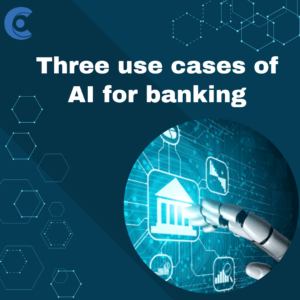Three use cases of AI for banking?

As the technology of GPT rapidly booms, it is leading to significant changes in the world. GPT utilizes advanced techniques that allow it to generate results by considering all possible angles, resulting in outputs that closely resemble human thought processes. One area where GPT is making a significant impact is in the banking sector. Here are three use cases of AI for banking using GPT.
1. Onboarding new customers:
Attracting new customers and resolving their issues can be a complicated and time-consuming process for both banks and customers. Consequently, many customers are dissatisfied, and banks face difficulties retaining customers. However, chatgpt can assist banks in simplifying and streamlining the onboarding process by automating a significant portion of the cycle. GPT can help customers with completing the onboarding process and providing solutions to customer issues.
By automating the onboarding process, banks can reduce the time and cost associated with customer acquisition, leading to a better customer experience. With GPT’s ability to generate human-like text, customers can have a more personalized experience that meets their unique needs.
2. Detection of Fraud:
In the absence of early detection of suspicious activity, banks suffer losses because it takes too long for them to identify suspicious activities. However, a GPT can detect unusual or suspicious activities in real-time so the bank can immediately take action to prevent fraudulent transactions and minimize potential fraud losses.
For example, when attackers steal debit or credit card numbers via an unsecured internet connection to withdraw funds, GPT can detect unusual transactions or user behavior changes to automatically alert banks of the threat.
By using GPT for fraud detection, banks can reduce the risk of fraudulent activity, improving customer trust and reducing financial losses.
3. Customer engagement through chatbots:
GPT can assist banks in providing efficient and personalized customer support by integrating chatbots into their customer engagement strategies. By leveraging GPT’s language processing capabilities, banks can develop chatbots that can provide instant responses to customer queries, increasing customer satisfaction and reducing the need for manual customer support.
For example, a customer can easily ask a chatbot about their account balance, recent transactions, or the nearest ATM location, and the chatbot can provide a quick response.
GPT can enhance the chatbot experience by generating human-like responses that can mimic the tone and style of human communication, leading to a more natural and engaging experience for the customer. Additionally, GPT can analyze customer interactions with chatbots and provide insights on customer behavior, enabling banks to improve their customer engagement strategies.
Share your thoughts on How can GPT revolutionize the banking sector?
